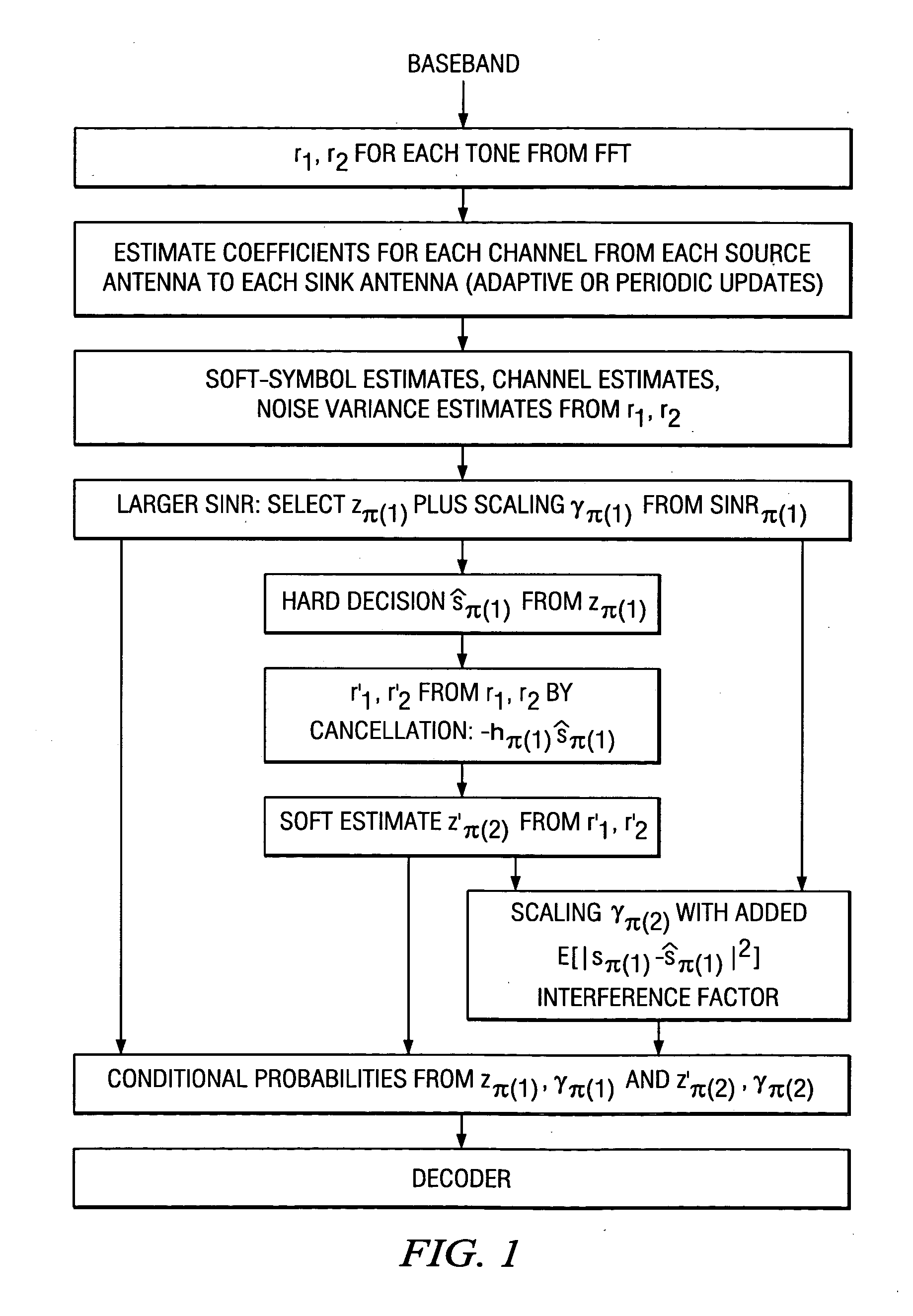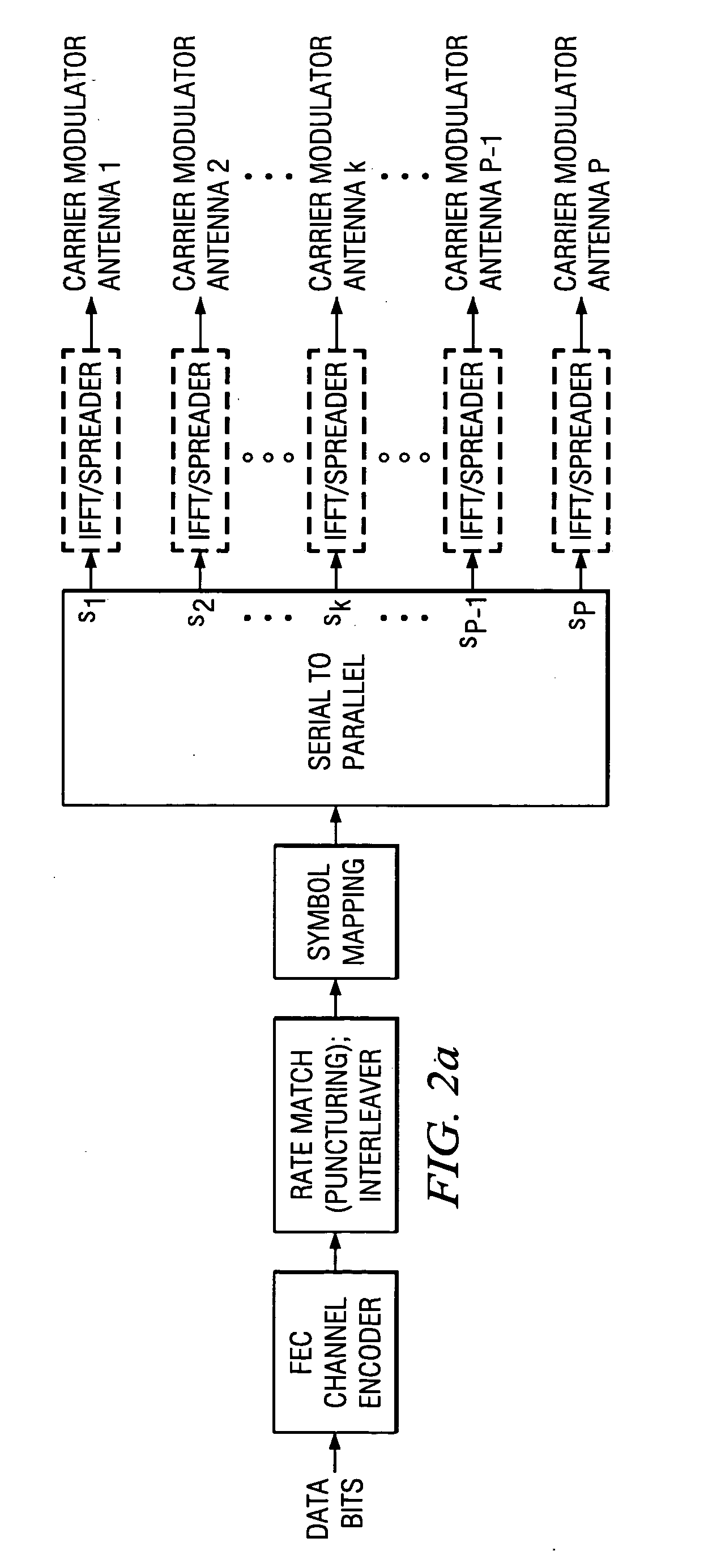MIMO decoding
a technology of multi-input and multi-output, applied in the field of multi-input multiple-output wireless systems, can solve problems such as impractically large computation complexity of maximum likelihood sequence estimation, intersymbol interference and multi-user interference, and require interference-resistant detection, so as to improve the performance of wireless systems
- Summary
- Abstract
- Description
- Claims
- Application Information
AI Technical Summary
Benefits of technology
Problems solved by technology
Method used
Image
Examples
Embodiment Construction
1. Overview
[0012] Preferred embodiment detectors and detection methods for multi-input, multi-output (MIMO) systems with interference cancellation capabilities compensate for decision errors in the symbols for cancellation by adjusting the scaling (normalization) of the transmitted soft symbol. The scaling factor has additive interference term proportional to a parameter depending upon the probability of decision errors. FIG. 1 is a flow diagram for a first preferred embodiment method with the additive interference term proportional to an estimate of the mean square decision error.
[0013] Preferred embodiment communication systems, such as wireless local area networks, include preferred embodiment interference cancellation receivers employing preferred embodiment interference cancellation methods. The computations can be performed with digital signal processors (DSPs) or general-purpose programmable processors or application specific circuitry (ASICs) or systems on a chip such as ...
PUM
 Login to View More
Login to View More Abstract
Description
Claims
Application Information
 Login to View More
Login to View More - R&D
- Intellectual Property
- Life Sciences
- Materials
- Tech Scout
- Unparalleled Data Quality
- Higher Quality Content
- 60% Fewer Hallucinations
Browse by: Latest US Patents, China's latest patents, Technical Efficacy Thesaurus, Application Domain, Technology Topic, Popular Technical Reports.
© 2025 PatSnap. All rights reserved.Legal|Privacy policy|Modern Slavery Act Transparency Statement|Sitemap|About US| Contact US: help@patsnap.com



